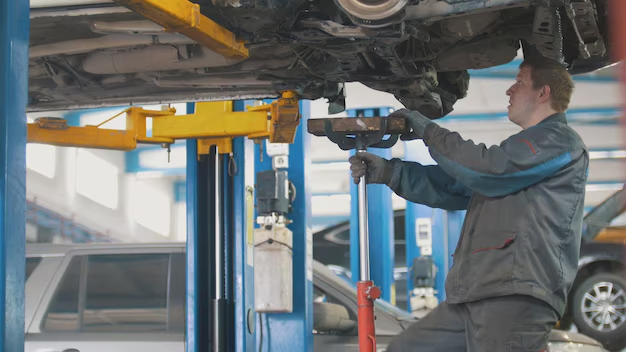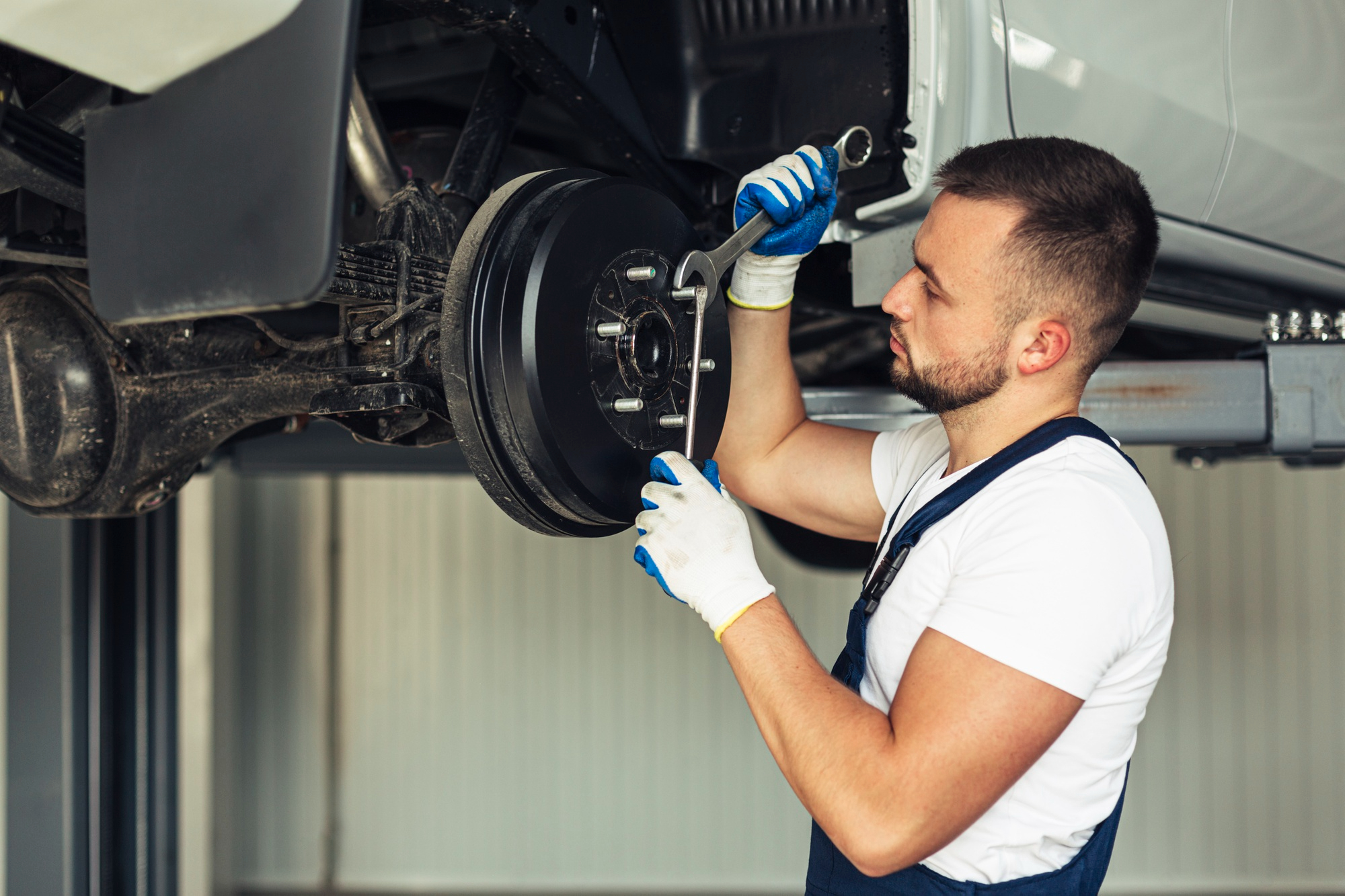
Shocks and Struts: When to Repair or Replace Them
If your car has been riding rough lately—bouncing excessively over bumps, dipping when braking, or just feeling less stable around corners—your suspension system might be trying to tell you something. Specifically, it could be your shocks and struts that need attention.
At Advanced Auto Clinic in Niagara Falls, we often see drivers come in with symptoms of suspension wear that have been developing quietly for months. That’s the tricky part: shocks and struts tend to wear out gradually, and the change in performance is so subtle over time that many people don’t realize there’s a problem until it starts affecting their vehicle’s safety.
So let’s dive into what shocks and struts do, why they matter, and how to know whether it’s time to repair or replace them.
What Are Shocks and Struts, and Why Are They Important?
Your car’s suspension system is designed to do more than just give you a smooth ride—it keeps your tires planted firmly on the road, no matter what’s happening underneath.
Shocks (shock absorbers) and struts are essential components of that system. While both serve similar purposes—damping the motion of the springs and controlling bounce—they’re not exactly the same:
- Shocks work with your suspension springs to absorb and control impact from the road.
- Struts combine a shock absorber with a structural component and are a key part of your suspension geometry.
Together, they keep your vehicle from bouncing out of control, help you maintain steering stability, and ensure proper braking performance.
What Happens When Shocks and Struts Wear Out?
Here’s the thing: shocks and struts don’t usually break all at once. They wear down over tens of thousands of kilometers, slowly losing their ability to control your car’s movement. The danger is that by the time the wear becomes obvious, your suspension repair needs may already be critical.
Worn shocks and struts can lead to:
- Increased stopping distances
- Nose-diving when braking
- Excessive bouncing or swaying
- Uneven tire wear
- Difficulty steering or keeping the vehicle in your lane
- Poor traction on wet or rough roads
All of this adds up to one thing: reduced vehicle safety. That’s not a risk worth taking.
How Long Do Shocks and Struts Last?
On average, shocks and struts last about 80,000 to 100,000 kilometers. However, this number can vary depending on:
- Driving habits (aggressive driving wears them out faster)
- Road conditions (rough roads, potholes, and gravel take a toll)
- Vehicle type and load (heavier vehicles and towing add more stress)
If you live in Niagara Falls or the surrounding area, you already know that Canadian winters and uneven road surfaces can be especially hard on suspension components. Even if your ride seems “fine,” your shocks and struts could be past their prime.
When to Repair vs. Replace
Can you repair shocks and struts? Usually not.
Unlike other vehicle components, most shocks and struts aren’t designed to be repaired. They are sealed units, meaning that once they start leaking or losing performance, they need to be replaced. That said, if your suspension issue stems from a surrounding part—like a mount, bushing, or coil spring—then a targeted suspension repair may be possible.

So, when should you replace them? Here are some solid indicators:
- Oil Leaks: If you notice oil leaking near your wheels or strut housings, that’s often a sign of internal failure.
- Rough or Noisy Ride: Banging, rattling, or clunking noises over bumps usually point to worn-out suspension parts.
- Longer Stopping Distances: Bad shocks can cause your tires to lose contact with the road, especially during hard braking.
- Vehicle Dips or Leans: If the front of your car dives when braking or the body leans excessively in turns, it’s time for a checkup.
- Uneven Tire Wear: Suspension problems can cause your tires to wear unevenly or more quickly than expected.
- Mileage Over 100,000 km: Even without visible symptoms, it’s smart to have your suspension inspected at this point.
The Dangers of Waiting Too Long
Postponing suspension repairs isn’t just uncomfortable—it can be dangerous. Compromised shocks and struts reduce your ability to react quickly, especially in emergency maneuvers or poor weather conditions. Your braking distance increases, and your tires lose grip faster. It’s also harder to maintain control in curves or sudden lane changes.
Plus, worn suspension components can lead to damage in other areas, like steering and braking systems. In short, it’s not just about comfort. It’s about control.
How Suspension Work Improves Performance and Longevity
A healthy suspension system does more than help you handle bumps in the road. It plays a critical role in:
- Steering Precision: Better suspension means more responsive steering, particularly at highway speeds or during evasive actions.
- Brake Efficiency: Shocks help keep your tires in contact with the road—if they’re not doing their job, braking takes longer.
- Tire Life: A well-maintained suspension system ensures even tire wear, maximizing your investment.
- Ride Comfort: This one is obvious. No more bounce-house rides or white-knuckle turns.
When your shocks and struts are functioning correctly, your vehicle feels tighter, more controlled, and ultimately more enjoyable to drive.
Inspections Matter
At Advanced Auto Clinic, every oil change includes a basic visual inspection of your steering and suspension components. That means we’re often the first to notice the early signs of worn shocks or struts before they become serious problems.
Our certified mechanics use advanced diagnostics and hands-on testing to evaluate the performance of your suspension system. We believe in being transparent about your vehicle’s condition, so you’ll always know exactly what’s going on under the hood—and under the chassis.
Can I Drive with Worn Shocks or Struts?
Technically, yes—but it’s not recommended.
Driving with worn shocks or struts increases your risk of accidents, especially in wet or icy conditions. You’ll experience decreased stability, longer stopping distances, and potential tire blowouts due to uneven wear.
What’s more, continuing to drive with bad suspension can strain other vehicle components, making future repairs more expensive than a timely replacement.
Niagara Falls Roads Take a Toll—We’re Here to Help
Roads around Niagara Falls are beautiful, but they’re not always gentle on your car. Between freeze-thaw cycles, potholes, and gravel roads, your suspension takes a beating year-round. That’s why Advanced Auto Clinic puts such a strong focus on preventative care and diagnostic expertise.
With over 2,000 satisfied customers and more than 2,900 vehicles repaired, we’ve earned a reputation for reliable service backed by 20+ years of hands-on experience. Our licensed technicians receive regular training and use industry-leading equipment to service all vehicle types—from daily drivers to work trucks and hybrids.
We also offer financing options, seasonal discounts, and special package deals—so taking care of your car doesn’t have to take a toll on your wallet.
Don’t Let Worn Shocks Compromise Your Safety—Book Your Suspension Inspection Today
Whether you’ve noticed one of the warning signs or just want to play it safe before your next road trip, now’s the perfect time to check your suspension system. At Advanced Auto Clinic, our certified mechanics in Niagara Falls will thoroughly inspect your shocks and struts, explain your options clearly, and recommend the best path forward, always with your safety and budget in mind.
Call us or book online today and rediscover the smooth, safe ride your car was built to deliver. Let’s get you back on the road—confidently.

